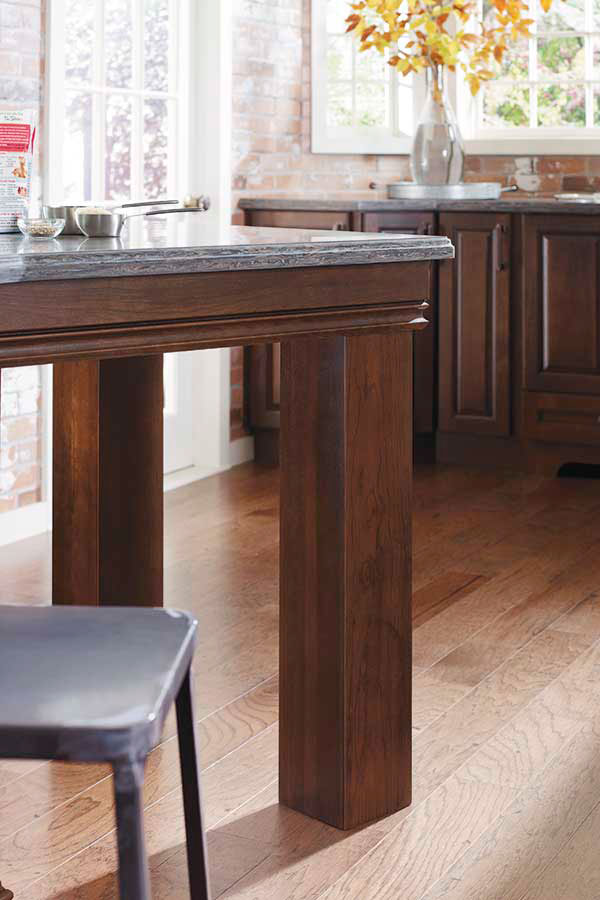Essential Elements to Consider When Picking Legs For Cooking Area Island
Picking the proper legs for a kitchen island entails a cautious analysis of several factors that can substantially influence both capability and aesthetic charm. As we explore these elements, it ends up being clear that each choice can have far-ranging ramifications for the total cooking area experience.
Material Options
When choosing legs for a kitchen area island, comprehending the numerous product choices is essential for attaining both aesthetic charm and architectural stability (Legs For Kitchen Island). The option of product considerably affects not only the toughness of the island yet likewise its general layout and functionality
Timber is a preferred option, using warmth and flexibility. Strong woods, such as oak or maple, give stamina and can be stained or repainted to match the cooking area decoration. Steel legs, typically made from stainless-steel or wrought iron, add a commercial and contemporary feeling while ensuring sturdiness and stability. These products are immune to use and can support considerable weight, making them perfect for larger islands.
An additional option is crafted materials, like MDF or plywood, which can be a lot more cost-effective while still providing a series of coatings. Nevertheless, they might not give the exact same level of security as strong wood or metal. Lastly, materials such as acrylic or glass can create a contemporary appearance, though they may require additional support to guarantee security.
Ultimately, the option of material for kitchen island legs ought to line up with the preferred performance and the total motif of the cooking area.
Design and Layout

When taking into consideration design, the form and coating of the legs are critical. Tapered legs can provide a feeling of agility and style, while thicker, more robust legs can convey strength and security. In addition, the coating-- be it repainted, stained, or natural-- must match the cabinets and counter top materials to produce a unified appearance.
Furthermore, the style of the legs can likewise mirror individual taste. Customized or ornamental legs, such as those including complex carvings or unique geometric shapes, can offer as focal factors, adding character and individuality to the cooking area. Eventually, the right selection will not only improve performance but additionally elevate the aesthetic allure, making the cooking area island a standout function of the home.
Height Factors To Consider
Selecting the appropriate elevation for kitchen area island legs is essential, as it straight affects both functionality and convenience. The conventional height for a cooking area island usually ranges from 36 to 42 inches, lining up with common kitchen counter heights. A 36-inch elevation is optimal for food preparation and food preparation, allowing for comfy use kitchen area appliances and devices. Conversely, a height of 42 inches is often liked for islands intended web for bar seating, suiting taller stools and supplying a casual eating experience.

It is additionally necessary to make up users' choices and heights. Customizing the elevation can guarantee a comfy experience for all relative, making the kitchen area island a more useful and satisfying space.
Weight Assistance
Ensuring ample weight support for cooking area island legs is important for both safety and security and performance. The cooking area island typically offers several objectives, including cooking, dining, and extra storage space, necessitating a durable assistance structure. When choosing legs, it is crucial to think about the total weight capacity needed based upon the island's intended usage and the products that will be put on it.
The selection of material for the legs plays a considerable duty in their weight-bearing capabilities. Solid timber, steel, and heavy-duty composites normally give exceptional strength contrasted to lighter products. In addition, the design of the legs-- whether they are directly, tapered, or have a pedestal kind-- can affect their ability to distribute weight efficiently throughout the framework.
Always seek advice from the maker's requirements pertaining to lots limitations to make sure that the legs can sustain the designated weight without compromising safety. In recap, picking kitchen area island legs with sufficient weight support is important for creating a secure and useful culinary room.
Setup and Maintenance
Proper installment and upkeep of kitchen island legs are critical for ensuring long life and stability. To begin, it is important to comply with the producer's guidelines discover this throughout installation. This often entails protecting the legs to the space station utilizing suitable bolts, making sure that the legs are level and straightened. Utilizing a degree tool can aid stop wobbling and improve the overall visual appeal of the cooking area island.
When mounted, regular upkeep is essential to protect the integrity and look of the legs - Legs For Kitchen Island. For wood legs, periodic cleaning with a wet cloth and application of appropriate timber polish can avoid dampness damage and preserve their surface. Steel legs may need a mild cleansing solution to eliminate oil and crud, followed by a dry fabric to prevent rust formation
Furthermore, check the legs regularly for signs of wear or damage, such as cracks or loose joints. Tightening screws or bolts as needed can also look here prolong the lifespan of the legs. By adhering to these installation and maintenance practices, homeowners can guarantee that their kitchen island remains sturdy and visually appealing for years ahead.
Verdict

Aesthetic comprehensibility is extremely important in selecting the style and design of legs for a kitchen area island, as these aspects substantially affect the total ambiance of the space. Tapered legs can provide a sense of lightness and beauty, while thicker, a lot more durable legs can communicate stamina and security.Selecting the proper elevation for kitchen area island legs is critical, as it straight influences both capability and convenience. In recap, choosing kitchen area island legs with appropriate weight support is vital for producing a risk-free and practical culinary room.
In verdict, picking legs for a kitchen area island requires cautious consideration of various variables, consisting of product choices, style, elevation, weight assistance, and setup.